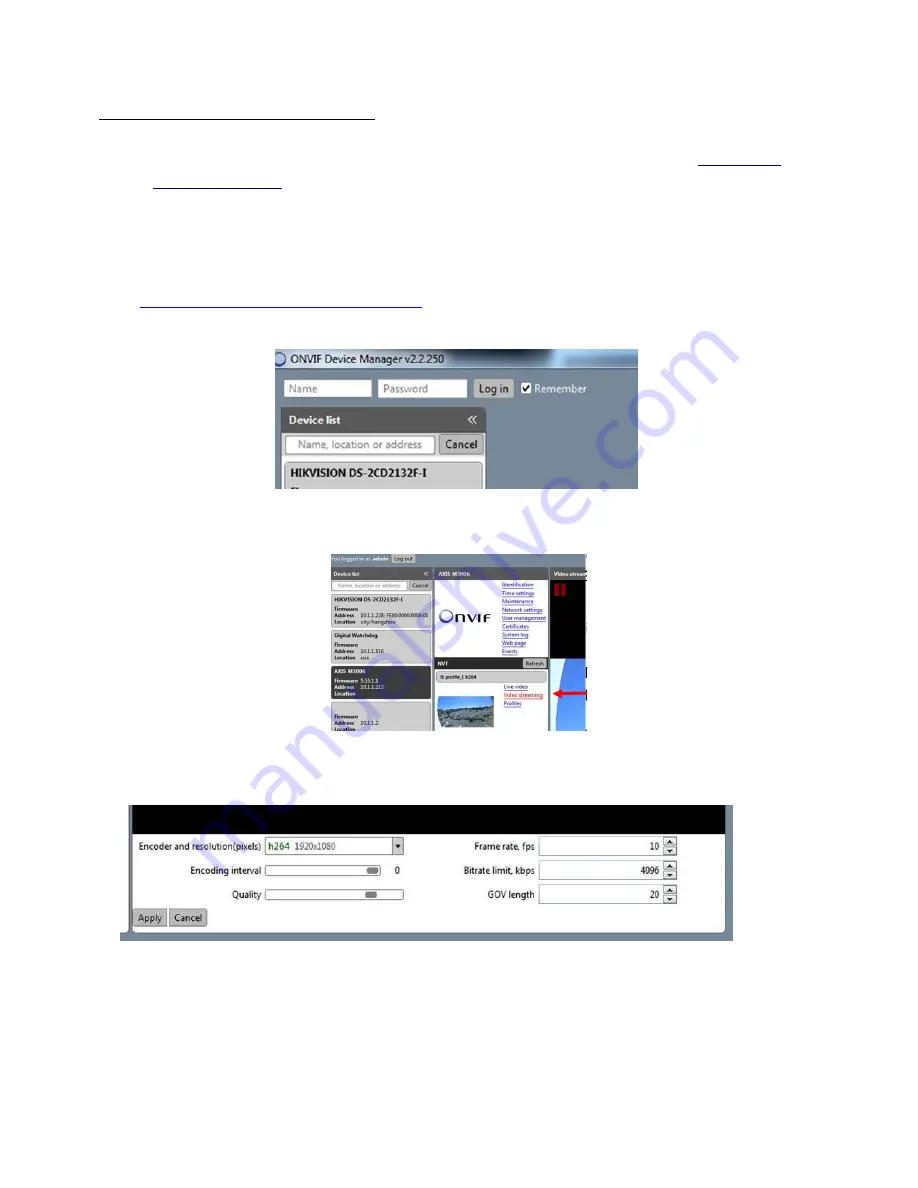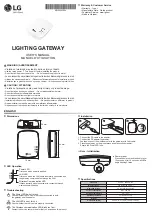
to discover additional cameras. If the camera does not support ONVIF or if ONVIF discovery is blocked by the net-
work, you can use the + icon to add cameras by IP address or RTSP URL.
•
Validation Tool User Guide: How to Steps
o
Once cameras are discovered, this Tool will help test compatibility and configure new and existing 3
rd
party
cameras. Detailed instruction for how to use the Validation Tool can be found at
ONVIF Device Manager:
An alternative to CheckVideo
’s
IP Camera Validation tool is ONVIF Device Manager.
If your camera’s management tools do
not display the option to change all of the settings above, you may find the ONVIF Device Manager helpful. You can install
this tool from
http://sourceforge.net/projects/onvifdm/
. Once installed, start the program and enter the 3
rd
party camera’s
admin access credentials in to the ONVIF Device Manager interface. You can get these credentials from the camera
manufacturer.
Select the camera from the list of visible cameras on the left side of the screen. Click on the Video Streaming link.
Go to the Settings page where you can set the Resolution, Frame Rate and GOV length values as required by
the Ruggedized Gateway. Select Apply to save these settings.
Adding Cameras to the Gateway via the Configure IP Gateway Page:
Now that the camera settings are updated, associate the Ruggedized Gateway to cameras on the same network.
From the CheckVideo portal, go to Devices>Configure IP Gateway:
•
Select the Gateway from the drop-down menu
•
Enter the ONVIF credentials for the camera. If you have more than one set of ONVIF credentials for the cameras
you wish to add, use those credentials that apply to the majority of cameras to be added.
•
Click Discover Cameras. At this point, all cameras visible on the Gateway's network will appear at the top of























